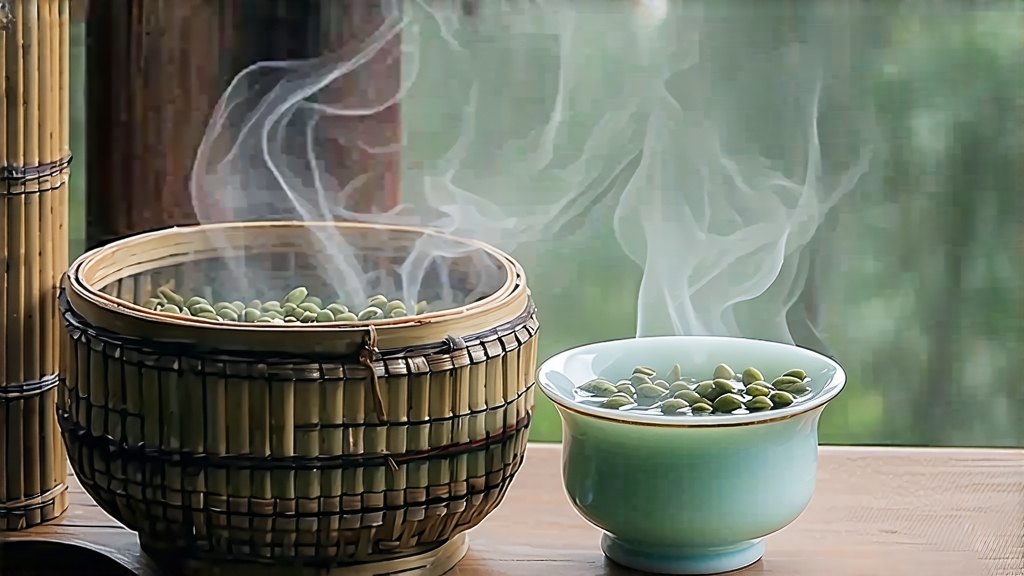
Tucked into the subtropical hills of Fujian’s northeastern coast, the small counties of Fuding and Zhenghe guard a tea so delicate that it appears spun from moonlight rather than leaf. Known in English as Silver Needle—Bai Hao Yin Zhen in the original romanization—this down-covered spear of a bud is the most aristocratic expression of white tea, a category defined less by color in the cup than by the near-absence of manipulation after picking. To understand Silver Needle is to witness Chinese tea craft at its most restrained: a whisper of nature that somehow contains centuries of agrarian wisdom, trade intrigue, and modern wellness fascination.
Historical whispers
The first verifiable record of “white tea” appears in the Song dynasty (960-1279), when imperial tribute lists mention “white cakes” pressed from silver-tipped buds and sent northward to the capital. Yet those cakes were green-tea ancestors; the loose, unpressed Silver Needle we recognise today took shape only during the late Qing, when export houses in Fuzhou catered to European and Southeast Asian clients who wanted a light, fragrant leaf that could withstand long sea voyages without losing character. By 1891, Fuding growers had standardised the pluck—only the unopened bud, no leaf—and perfected the long, slow withering that concentrates amino acids while keeping enzymatic oxidation barely above zero. The tea entered global imagination under the poetic mistranslation “Silver Tip Pekoe,” a phrase that still surfaces in vintage English tea catalogues.
Micro-terroir: two counties, two personalities
Although both fall under the protected geographical indication “Fuding–Zhenghe White Tea,” the two counties produce recognisably different Silver Needles. Fuding’s coastal hills, flushed with sea fog and red granitic soils, yield buds that are plumper, silvery-white, and famously sweet; the cup is limpid apricot with a honeysuckle top note. Zhenghe, higher and more continental, sits on volcanic loam; its buds are slightly slimmer, ash-grey rather than snow-white, and deliver a deeper, orchid-like fragrance with a faint ironstone finish. Connoisseurs treat them as parallel tastings the way Burgundy lovers compare Chambolle-Musigny and Gevrey-Chambertin.
Pluck and immediacy
Silver Needle harvest begins at dawn on the first连续三天 above 18 °C that follow the spring equinox, usually between 15–25 March. Only the “chicken-tongue” bud—so called because it is still curved like a chick’s beak—is taken. A skilled picker can gather 800 g of fresh buds in a day; once desiccated that shrinks to under 200 g, explaining why top-grade Silver Needle often costs more than Dragon Well or even some Dian Hong. The buds must not be squeezed or bruised, so they are laid no deeper than 3 cm in bamboo baskets lined with banana leaf and rushed to the withering loft within two hours.
The invisible craft: withering as meditation
Unlike green tea, whose personality is fixed by a quick blast of dry heat, Silver Needle is coaxed into being over 48–60 hours of gentle dehydration. Traditional producers use second-story lofts whose louvered windows face north; temperature is kept at 22–26 °C, relative humidity around 65 %. The buds are spread on bamboo trays called shai qing lian, turned by hand every hour through the night. During this marathon the moisture content drops from 75 % to 12 %, while endogenous enzymes convert bitter catechins into sweeter dimers and release a signature molecule, trans-2-hexenal, responsible for the tea’s cucumber-cool aroma. No rolling, no pan-firing, no baking—just air, patience, and the grower’s intuition about when a bud has crossed from “grass” to “grain,” the moment it rustles like dry wheat when shaken.
Modern iterations
Climate-controlled tunnels now allow some factories to compress withering to 36 hours, but the most sought-after lots still come from family workshops that obey the weather. A niche “sun-withered” version exists: buds spend the first four hours under early-spring sunlight, developing a faint coconut note, then finish indoors. Experimental growers have also introduced 8-hour charcoal ember warming (wen huo) to hasten drying, yet purists argue this flattens the layered sweetness. Regardless of method, finished tea must contain ≤ 7 % residual moisture and pass a strict sensory panel that checks for the tell-t